FDM/FFF (Fused Deposit Modeling/Fused Filament Fabrication)
This is the cheapest and most widely available 3D printing technique, wherein a spool of plastic is additively melted to create a form. Materials: PLA (polylactic acid), ABS (acrylonitrile butadiene styrene), Nylon (polyamide), Polycarbonate, etc.
Potential Applications
- Soul Plates
- Buckles
- Frames
- Boots
PRO
- Inexpensive printer hardware
- Widely available
- Easy to use/learn/get started with
- Cheap consumables
CON
- Not that strong without heat treatment/chemical post-processing. Still less durable than injection molded plastic.
- Slow: 10+ hours for a frame
SLS (Selective Laser Sintering)
Plastic (usually nylon/polyamide) powder is mechanically spread and built into fine layers that are melted together by a laser.
Potential Applications
- Soul Plates
- Buckles
- Frames
- Boots
PRO
- Potentially stronger/less prone to delamination than FDM/FFF plastic prints
- High resolution finish
CON
- Not widely available as an end-consumer process; parts must be printed by/ordered from a third party
- Somewhat expensive; very expensive printer hardware
SLM (Selective Laser Melting)
Metal powder is mechanically spread and built into fine layers that are melted together by a laser.
PRO
- Printed metal??!?!?!?
CON
- Parts must be printed by/ordered from a third party
- Requires an expensive high power laser; very expensive, even when provided as a service
SLA/SL (Stereolithography)
Photoreactive resin is continuously cured by UV light and fixed in a post-printing chemical bath.
Potential Applications
- Small parts: buckles, antirocker wheels
PRO
- Parts are high resolution, have a smooth finish without cleanup and are dimensionally accurate
CON
- Not that strong
- Most machines cannot print large parts
CNC (Computer Numerical Control) Milling
The opposite of printing: material is programmatically, subtractively sculpted by a drill bit.
PRO
- Much faster than printing
- Can shape virtually any type or strength of material
CON
- Steep, less lazy learning curve than printing: requires an understanding of manual operations
- Expensive relative to FDM/FFF printing, with some affordable turnkey/DIY options becoming available
- Some designs are not possible to produce, such as those with enclosed cavities

Comments
No comments yet.